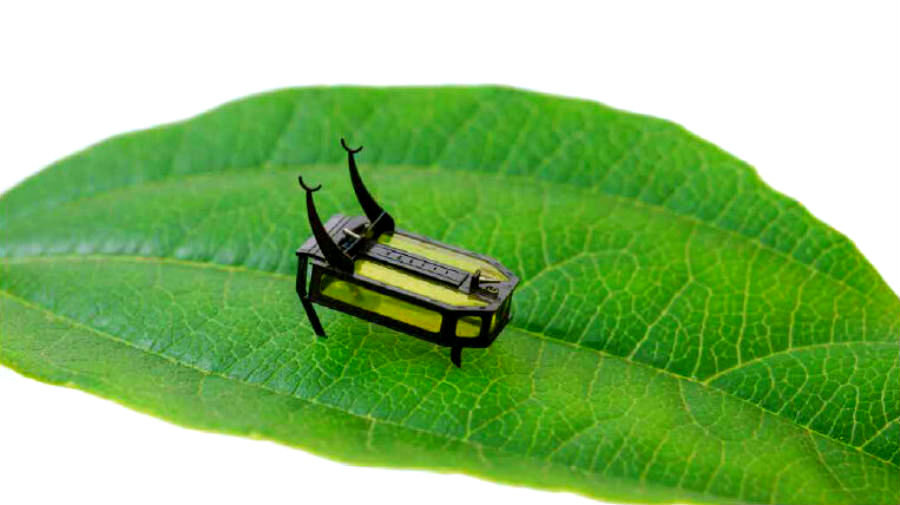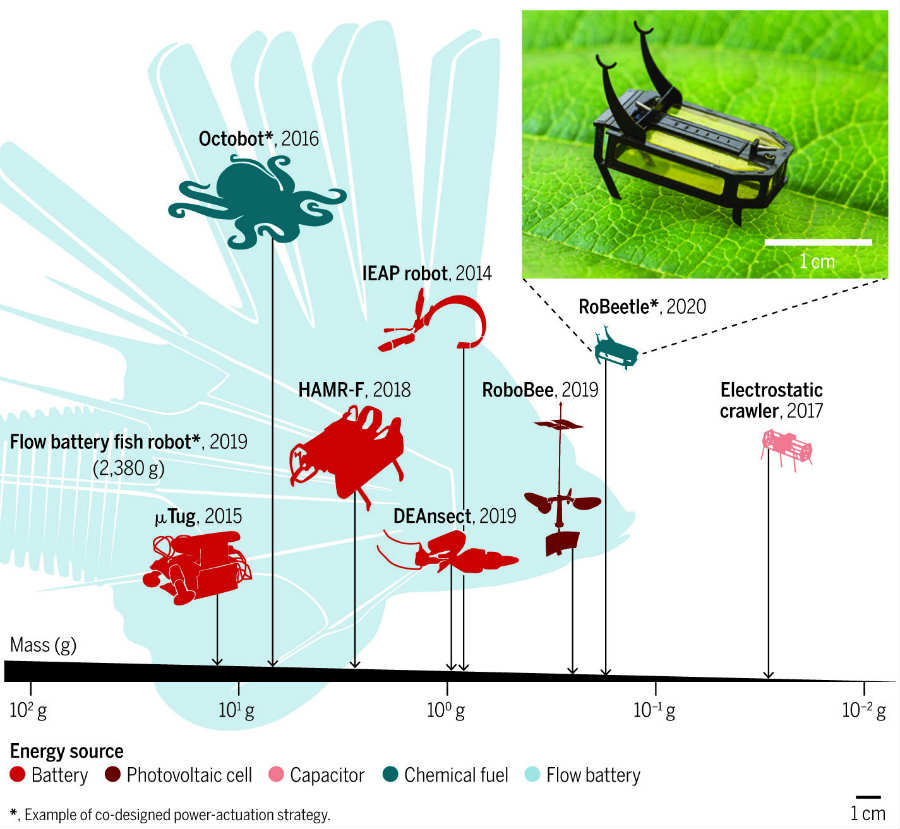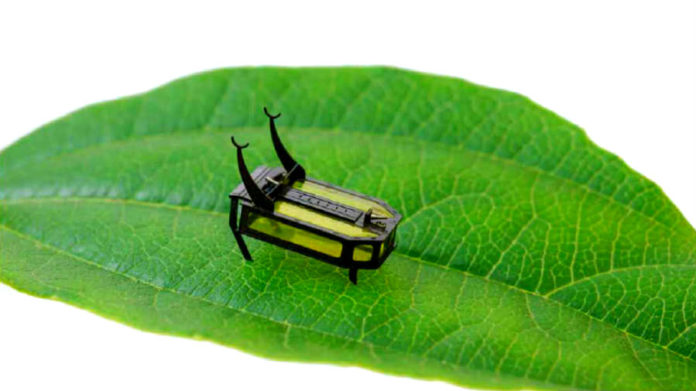
There is a new Beetle-type robot called, “RoBeetle” weighing only 88mg, that uses an artificial muscle technique to move. Its methanol powered fuel tank allows it to move for 2 hours straight. The brain behind RoBeetle is a group of scientists from the University of Southern California.
Creating tiny robots that can conquer environments inaccessible for humans, has become a necessity in recent years. From different shapes to mimicking insects or animals these robots have come a long way. Their power sources vary from battery-operated, solar-powered, chemically fuelled etc.
According to Xiufeng Yang, the lead author of the study, “RoBeetle is one of the lightest and smallest autonomous robots ever created, so far, the smallest battery-powered crawling robot ever made, weighs one gram and operates only about 12 minutes.” Unlike RoBeetle its similar counterparts are bulky, with either electricity dependant or battery-powered with. Even the smallest available battery also 10 or 20 times heavier than the modelled tiger beetle which weighs about 50mg.

Features
RoBeetle is powered by the catalytic combustion of Methanol. Its conversion of energy per weight is 10 times more than that of a battery-powered robot. Where most of these electric-powered tiny robots rely on external powers, RobEetle runs on methanol as fuel.
RoBeetle has chemically (methanol)-powered artificial muscles. They are made from nickel-titanium alloy wires (Nitinol) coated with platinum powder. Nitinol is a special metal that contracts when heated. It also uses an integrated mm-scale mechanical control mechanism.
The RoBeetle is made of carbon fibre giving it a lightweight of only 88mg with a 15mm length, RoBeetle is modelled compared to the Tiger Beetle (Cicindela eburneola) which is roughly 50mg in weight and 10.5mm in length.
RoBeetle can crawl, climb up on ramps, has a maximum payload of 2.6 times of its own body weight and can work without any external dependency.
How does it work?
When methanol vapour release from the RoBeetle’s fuel tank, it burns in a catalytic combustion on the platinum powder coating. With the heat produced, the muscles made from nitinol wires contract. Then a set of micro-valves stop the combustion. As soon as the wires are cooled they expand. This opens the micro-valves again and the cycle repeats until the methanol is burned completely in about 2hours.
The research team believes that they have taken the first step towards a new generation of fully autonomous microbots that can navigate through various environments.
The study has been published in the Science robotics.

